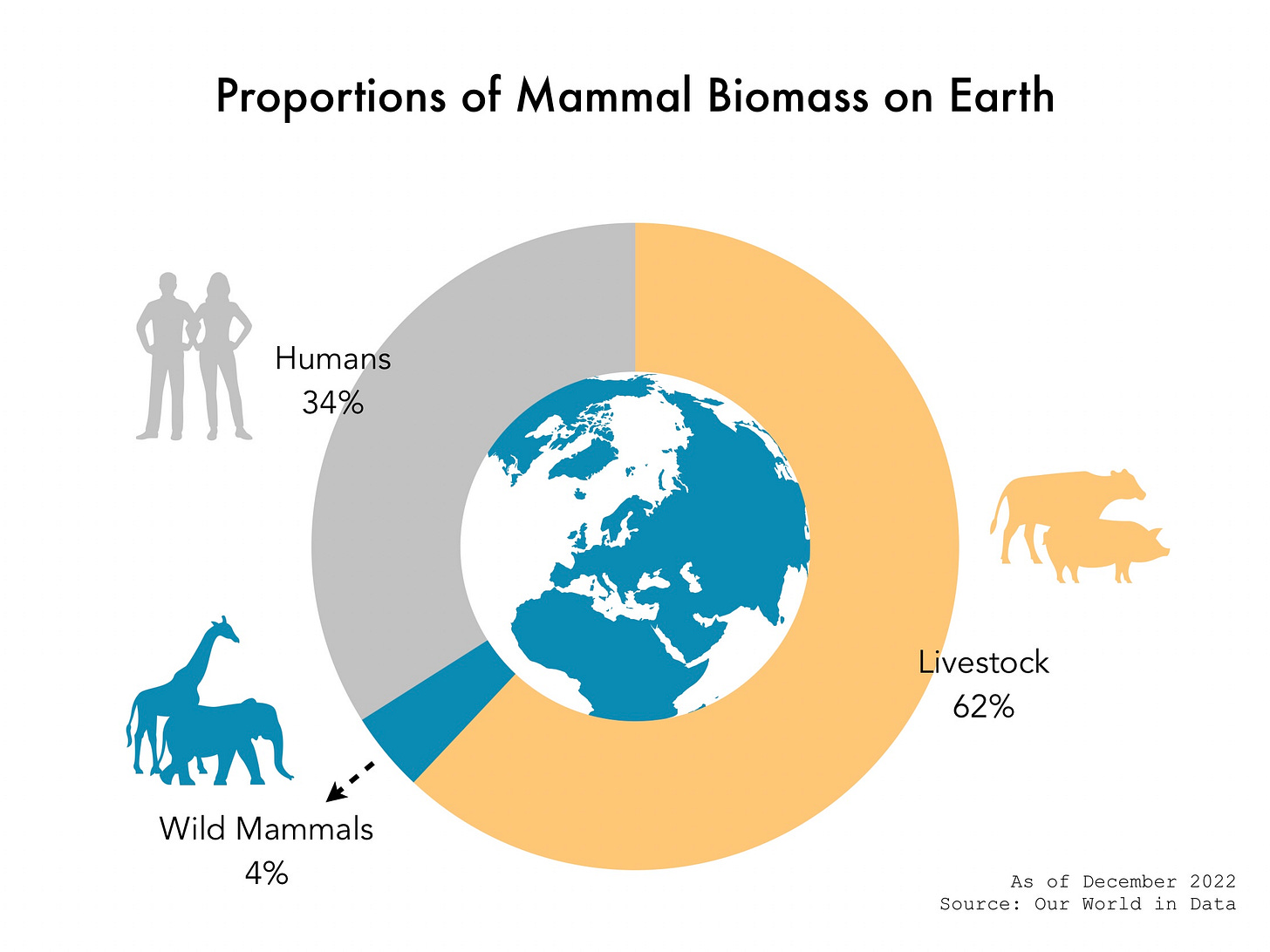[AI for the Sustainable Future] Smart Agriculture
Smart farming, powered by IoT and AI technologies, not only improves productivity but also reduces environmental impacts caused by agriculture.
Contrary to idyllic notions, agricultural practices often have significant environmental impacts. Truth be told, agriculture is a major contributor to pollution — a reality that's becoming more widely recognized amidst the recent disputes between European farmers and the EU.
Can AI optimize agricultural practices for sustainability? Let’s find out.

Agriculture and environmental impacts
According to the article from Our World in Data, agriculture uses 50% of the world's habitable land and 70% of freshwater, and is responsible for 78% of ocean and freshwater pollution. Food production, predominantly through crop cultivation and livestock farming, contributes approximately a quarter of global greenhouse gas emissions. Livestock in particular emit methane, a greenhouse gas even more potent than carbon dioxide for trapping heat.
What makes methane a more potent greenhouse gas than carbon dioxide? | MIT Climate Portal
The environmental impacts of crop production and livestock are not isolated; rather, they form a vicious cycle. Deforestation occurs not only for timber but also to clear land for livestock, driven by the ever-increasing demand for meat. This, in turn, leads to greater use of land and freshwater for growing crops to feed livestock. The disproportionate distribution of mammal biomass on Earth, as shown in the chart below, starkly illustrates the severity of this situation.

Even with a brief look at the status shown above, we can realize that agriculture’s impacts on the environment are a deep-rooted systematic problem.
Sustainable farming aided by AI
While technology, including AI, can't single-handedly mitigate the detrimental consequences caused by the modern agricultural system, it can still play a significant role in making agriculture more sustainable. This underscores the importance of smart farming as a crucial step towards more sustainable agriculture.
What is Smart Farming? It's The Future of Agriculture | IoT For All
Smart farming involves managing farms using technologies like IoT, robotics, drones, and AI to enhance and optimize agricultural operations. While the broader term of smart farming encompasses supply chain management, energy use optimization, and overall farm management, precision farming is a core component of smart farming, which leverages IoT-based monitoring and data collection, enhanced by AI that analyzes vast datasets.
Through precision farming practices, data is collected from various sources — such as soil sensors, drone monitoring, and satellite imagery — to optimize planting, watering, and harvesting processes. This includes crop yield forecasting and disease outbreak predictions. Precision farming extends beyond crop cultivation to livestock management, providing real-time monitoring and analysis of individual animals’ health.
In essence, precision farming dramatically improves decision-making on a per square meter basis or even for individual plants or animals. This leads to better use of resources and reduced waste, enhancing productivity and efficiency of farming while minimizing its environmental impact. (In the case of livestock, precision farming can also contribute to animal welfare.)
The BBC News video below presents a case of smart farming in India, where agritech startups are increasingly emerging. In the video, a vineyard worker says that AI advice has helped save 50% of the water the farm had been using previously.
Farmers’ lives and sustainability
Sustainable agriculture indeed presents unique challenges, as it involves a complex interplay of ecological, economic, and social factors. The ongoing protests by European farmers against the EU policies signify that multidimensional perspectives are needed to devise constructive solutions for these challenges. As quoted in the article below, a head of the farmers' movement stated, "The people who provide our daily food are dismissed as animal abusers, poisoners, soil destroyers and environmental polluters." This is NOT a simple problem to solve with a single-minded approach.
Why are farmers across Europe protesting? | DW
In the video embedded in the article below, two Members of the European Parliament (MEPs) engage in an interesting discussion. Mr. Dacian Ciolos, an MEP with the group of Renew Europe and the former Romanian prime minister, comments, “The way that European Union managed Green Deal … without taking economic evaluation of impact on farmers into account … I think it was a mistake.” Meanwhile, Mr. Francisco Guerreiro, a Portuguese MEP with the group of the Greens/EFA, points out, “We had just a small percentage of eco schemes that can be used by farmers to change their way of producing food to a more sustainable one. But it's just a small portion. The majority of the funds continue to support the same traditional production system.” Later in the talk, Mr. Ciolos emphasizes the need for ‘coherence’ in the policy-making process, advocating for not handling agricultural and environmental policies separately, stating, “All the food chain should be involved in this process.”
Farmers' protests across Europe: Can the EU save both the planet and its agriculture? | France 24
As highlighted by these experts, integrated approaches and interdisciplinary efforts are essential to make agriculture and the overall food production process more sustainable. It’s vital to actively support farmers in transitioning to more sustainable practices, with financial and technological assistance, whether provided globally by IGOs like the EU and UN or nationally by individual governments.
However, even these efforts may not suffice. Ultimately, a more fundamental, structural change is needed to rebalance the Earth’s ecosystem, which has been severely impacted by millennia-long agricultural practices. (Recall the earlier-presented shocking chart depicting the biomass imbalance.) To achieve this goal, we may need to explore entirely new dimensions. ‘Alternative proteins’, which could serve as a literal alternative to current factory farming, is one such example.
This journey towards sustainability is a long game…



